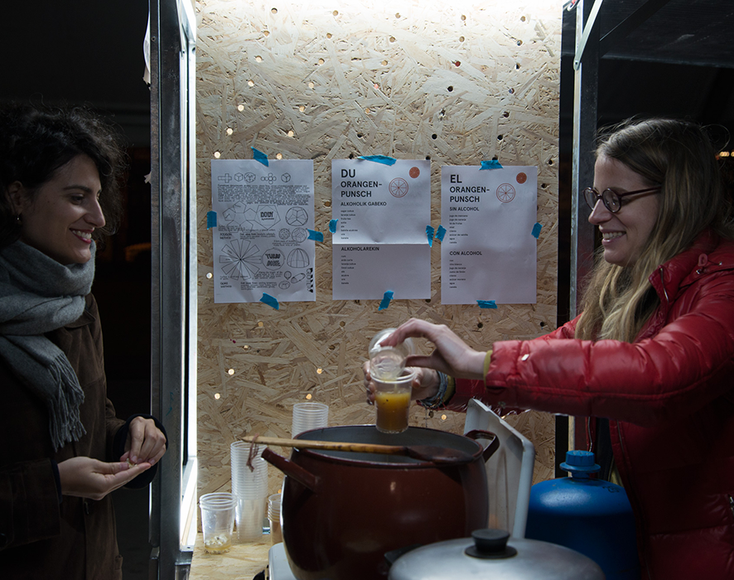Repensar • Huarte



Location Huarte (ES)
Date 2017-2018
Status Project completed
Photo credits Mirari Echavarri, Gorka Beunza
Video credits María Garcia Marraco
Project team Ioar Cabodevilla Antoñana, Itxaso Iturrioz Zuluaga, Xabi Urroz Zabalza · Orekari Estudio, Florian Rizek, Salomé Wackernagel · Enter This, Mario Pérez Azcona, Uxue Pérez de Pipaón, Maddi Berraondo + Inhabitants of Huarte
Support Georg Zolchow (Hablar en Arte), Collaborative Arts Partnership Programme (CAPP), Centro de Arte Contemporáneo de Huarte (CACH)
→ Part of the process: Repensar la Periferia
Publications
Award
Building of the Year 2021 Archdaily Award in the category Small Scale and Installations
The starting point of the whole Repensar la Periferia process has been a three months collaborative residency of the architecture collective Enter This (Berlin/Vienna) organised by Hablar En Arte and the European programme CAPP (Collaborative Arts Partnership Programme) at the Centro de Arte Contemporáneo de Huarte. Huarte is a former village which has grown out in the last decades into a sattelite of Pamplona. In Basque, Huarte means “river”, and the village, which is surrounded by the River Arga, is known for its several greenhouses (in Spanish: “huertas”). Its inhabitants are proudly named “cebolleros” (“oignon-growners”).
Huarte is a true symbol of the impacts of the Housing Bubble and the financial crisis of 2008 on Spanish suburbs. The Centro Huarte, completely disproportionate in relation to its surroundings, has been built ten years ago at the entrance of the small town. In order to decentralise the culture, it has deliberately been built outside of Pamplona. However, for the inhabitants of the village, the “black box”, as they name it, remains a pure product of the real-estate bubble and the years of crisis which followed. The cultural and artistic reach of the Centro Huarte has suffered a lot from this situation, and remains limited.
During the project Repensar el Contenedor (Rethinking the Container), we organised design and construction workshops in which we built together with the community two mobile architectures, the Totems. The Totems are satellites of the Centro Huarte, which allow to create more interactions between the cultural insitution and the inhabitants.
The residency consisted of three phases:
-
In the first phase, impressions were gathered on how the Centro Huarte was seen and lived by different people, such as the inhabitants of Huarte, artists, architects, social workers, users, etc. From there the idea surged to create a meeting point that served as a link between the Centro, its artists and the locals.
-
In the second phase, the mobile structures were designed during participative dynamics. The Totems were born from all these workshops, as a result of the participative process: mobile elements, adaptable and configurable for different purposes.
-
In the third phase, two Totems were built. The first one - the WorkshopTotem , aims to provide a work area wherever it is located. Tables, benches and a tool board make it possible to hold all kinds of workshops, courses, talks and even meetings in the public space. The second totem is the Exhibitive Totem. Apart from housing more furniture such as chairs and benches, its doors create some vertical panels where you can hang posters and artworks.This totem is used to expose, teach and promote any cultural activity in the outside space.
Both elements, conceived as an antithesis to the building from which they were born, are intended to symbolize transparency, openness and movement. The metallic structure is covered by a skin made of cellular polycarbonate, a small wink to the greenhouses that make the pride of Huarte’s inhabitants. This waterproof skin protects the elements made of OSB wood.
























